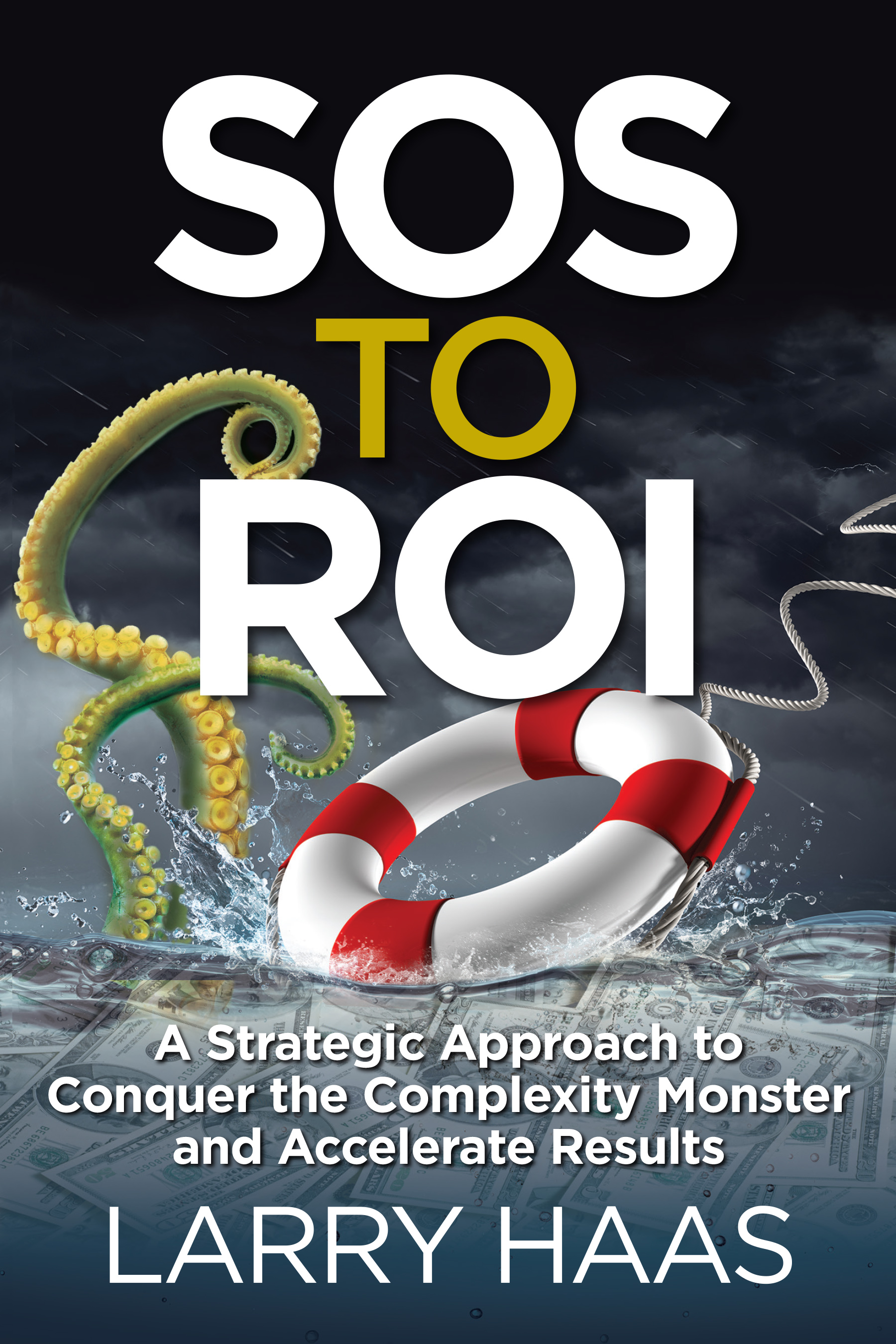LOS ANGELES, Dec. 19, 2017 /PRNewswire/ — What is an SOS moment for a business?
“An SOS moment is the painful and universally inconvenient realization that things are not as they should be,” says Larry Haas, author of the book “SOS to ROI: A Strategic Approach to Conquer the Complexity Monster and Accelerate Results” (Indie Books International, 2017).
 According to Haas, a former rocket scientist with the United States Air Force, the business issue might be a broken system or a gap in capabilities. The issue might be so complex management cannot see its true priority or even where to begin.
According to Haas, a former rocket scientist with the United States Air Force, the business issue might be a broken system or a gap in capabilities. The issue might be so complex management cannot see its true priority or even where to begin.
Haas is the CEO of Global Aperture Inc., a management consulting firm that helps large organizations overcome complexity. Prior to founding his company, Haas served as a consultant and leader in organizations such as The Boeing Company, PricewaterhouseCoopers, and Procter & Gamble, and as an officer and program manager in the US Air Force.
“Going from SOS to ROI is often an iterative process,” says Haas. “These eight steps summarize the basic logic applied while moving from distress to success in terms of improved return on investment in people, time, and dollars.”
Step 1: Confront the Challenge
The process begins with the keen realization that something is horribly wrong and quick action is needed to limit damage and find the root cause. This often includes a distress call for help.
Step 2: Repair the System
Then it’s time to identify what in the system allowed the issue to occur in the first place and what in the system needs to change to prevent the issue from ever occurring again. Sometimes, issues arise from a flaw in the business system that needs to be fixed (e.g. supply chain, product design, operations, or customer service).
Step 3: Build Capabilities
Next, the process is about looking at what specifically needs to be in place more permanently to take the organization where it wants to go. It’s about defining the gap relative to future aspirations and needs. In some cases, a short-term solution might be needed to bridge capabilities.
Step 4: Broaden Alignment
Realizing that most organizations have multiple improvement opportunities, the team responsible for the improvements will need to not only set priorities but also gain alignment with stakeholders around the likely effectiveness of the strategy and elicit their support.
Step 5: Create the Plan
After gaining agreement on a basic approach and that it’s a priority worth pursuing, the team builds a detailed plan, complete with risk mitigation, budgets, and timelines.
Here the key risks are identified, mitigations steps are envisioned, and those steps are wrapped back into the detailed plan. The team understands how it will operate on a daily or weekly basis, how it will measure progress, report status, request help, and make changes to the plan.
Step 6: Focus Execution
The perfect solution to the problem with the perfect plan and in perfect priority means little without the drumbeat of daily execution. Many corporate antibodies conspire to knock critical improvements off track, and team members can get distracted with competing priorities, lose focus, or worse—secretly reduce scope to make their lives more manageable. At this stage, it is critical to manage the bandwidth (the collective attention span and degree of focus) of the individual teams. More than money or time, bandwidth is often the limiting element in improvement initiatives.
Step 7: Construct the Roadmap
Given many improvement initiatives are usually in play at any one time, it’s critical to understand how they all work together. Knowing that largely ineffective to attempt to implement these all at once, the effective leader uses logic and judgment to lay out a multiquarter improvement plan—a roadmap—with clear priorities, while also protecting the bandwidth of the implementation team. Subsequent initiatives are authorized when they are ready, but not before.
Step 8: Manage the Portfolio
Once an organization completes the preceding steps once, it can begin to make periodic corrections to the plan, update the roadmap, build momentum, and incorporate new priorities on a regular basis, based on changing needs and dynamics. As initiatives complete implementation and yield results, bandwidth frees up to address emerging priorities.
“Organizations that learn to stop and freeze lower-priority projects, defend priorities, and continually manage the bandwidth of the leadership team typically find the greatest ROI in people, time, and dollars,” says Haas.
